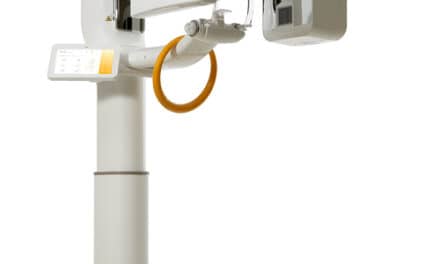Roy Ramquist is the marketing manager of GE Healthcare’s dental imaging division.
OP: What do you see as the shift in the orthodontic x-ray market?
Ramquist: The traditional means of capturing the image was placing a piece of x-ray film in a rigid cassette with intensifying screens. After x-ray exposure, the film was run through a liquid chemical process to reveal the image. In recent years, however, digital-capture devices have replaced the film cassette. A CCD (charged coupled device) captures the information, converts it to a digital signal, and sends the image to a computer for display. Capturing the image digitally eliminates the chemical process, along with the mess and maintenance required to keep the film-processing machine operating properly.
OP: Why are orthodontists embracing direct-digital imaging faster than general dentists?
Ramquist: The benefits of digital imaging are particularly useful in orthodontics. Along with the immediacy of image capture, the ability to make use of computer-based tracing programs has been recognized as a real benefit. For all the reasons stated above, the orthodontic community is now embracing digital imaging, even though the initial equipment cost is higher than that of film-based systems. Almost all of the pan/ceph units now being sold by GE are digital.
OP: What new product or products can orthodontists look for from GE Dental Imaging?
Ramquist: The highest image quality has always been a feature of the GE (formerly Instrumentarium) Orthopantomograph OP100 panoramic systems. Panoramic image quality is basically controlled by the size of the x-ray tube’s focal spot and the geometric path generated by the motion of the unit around the patient’s head. GE has offered the smallest focal spot for many years. The geometric path of the OP100 is robotically controlled, and the image density is ensured by means of an Automatic Exposure Control feature. Other than capturing the image digitally, it is doubtful that the technology of traditional panoramic image generation can be advanced any further. Therefore, upcoming new panoramic systems from GE will concentrate on improved operator interfaces and other cosmetic features. Longer-term R&D efforts are concentrating on other imaging technologies, such as volumetric tomography.
OP: How are the new products advances over the current ones?
Ramquist: A standard panoramic image consists of a fixed image layer. One of the advantages of digital capture is the ability to capture not just one image layer but data from a number of projection angles to generate a volume of data that can then be manipulated to see information throughout the volume scanned. This also might allow computer modeling for case preparations.
OP: What do you see as the next step in digital imaging?
Ramquist: The next major technology leap beyond volumetric tomography would be the application of cone-beam computed tomography (CT) technology for orthodontics. While this technology has been available for a few years, the current products are designed for broad applications and are therefore being offered at high prices. GE’s R&D efforts are being directed at developing a high-quality, yet affordable, cone-beam CT unit specifically for orthodontists.









